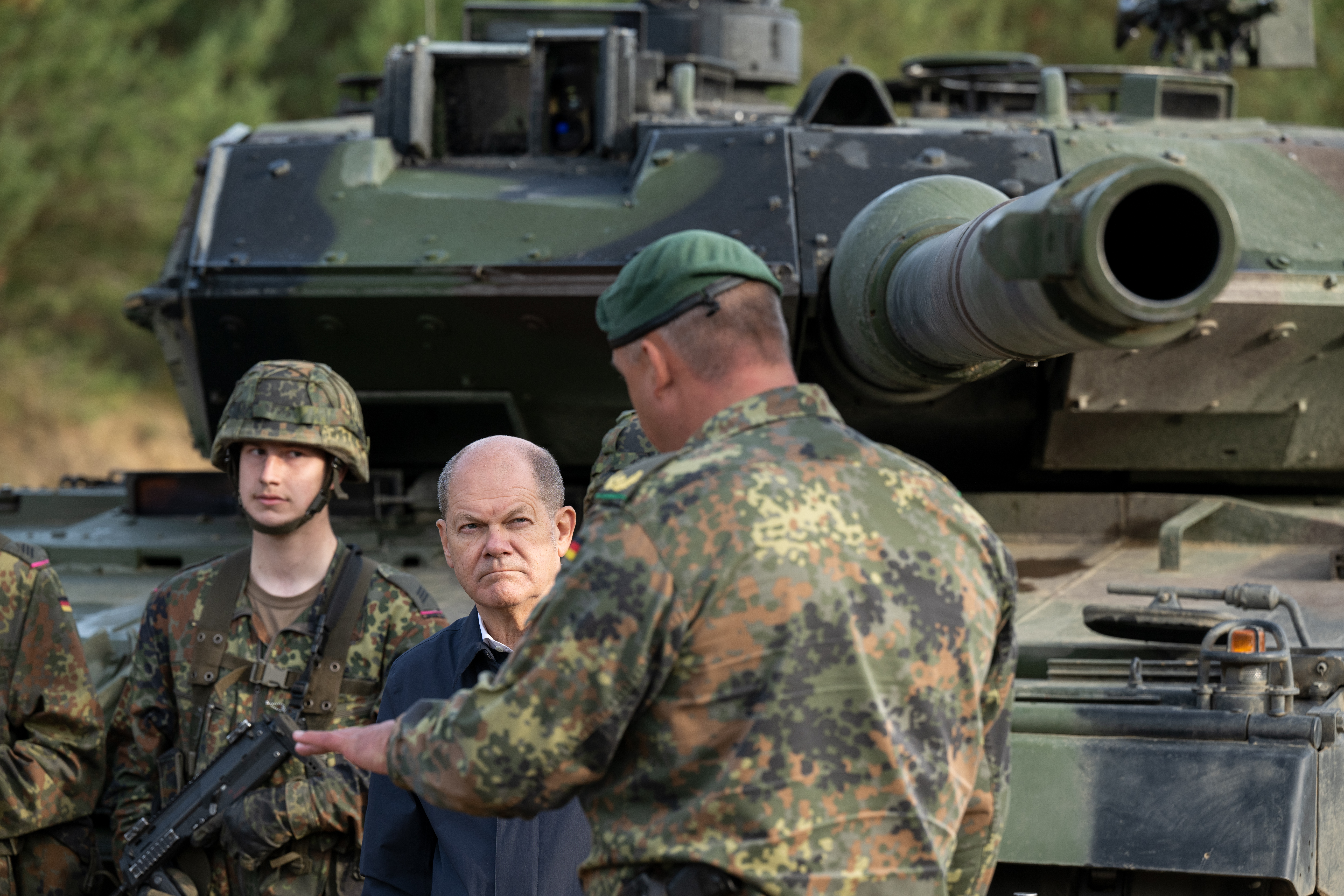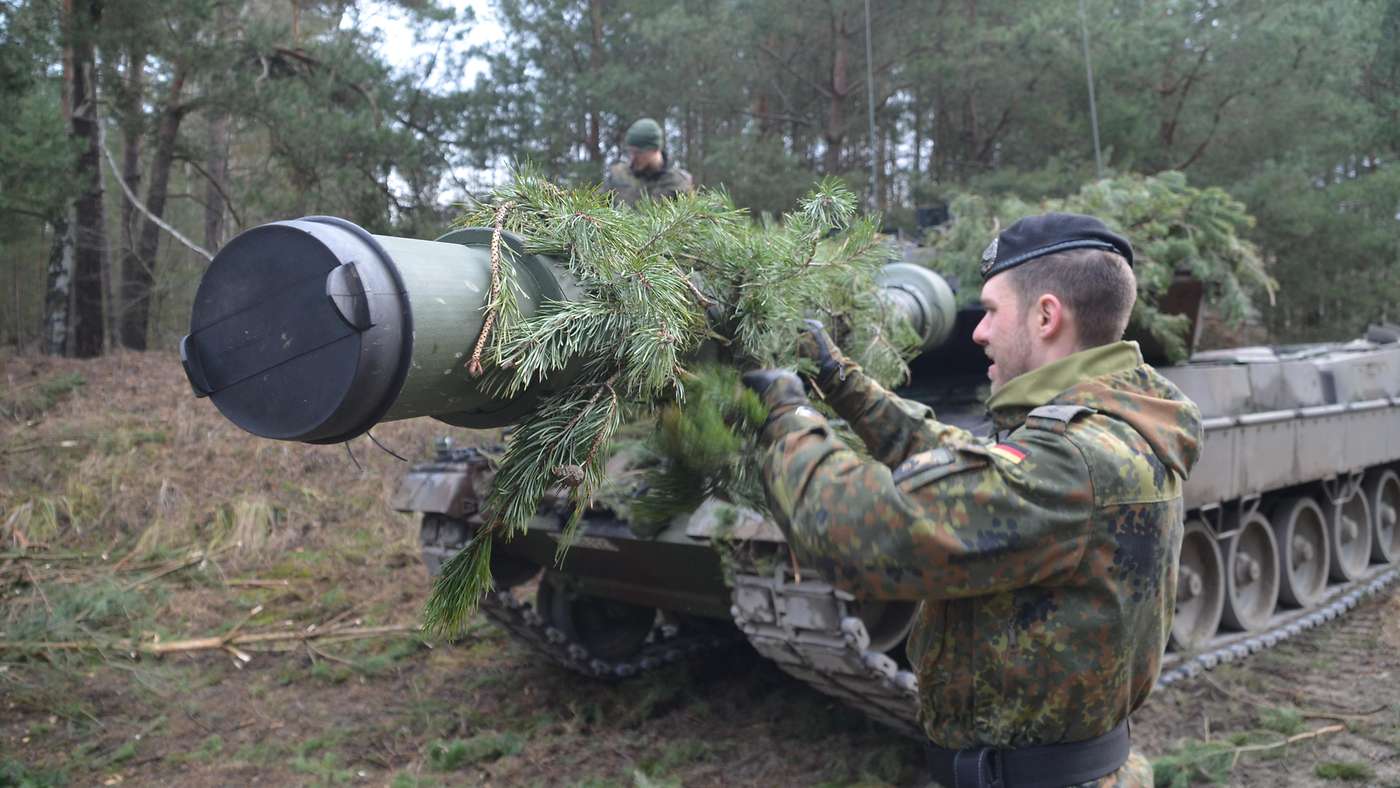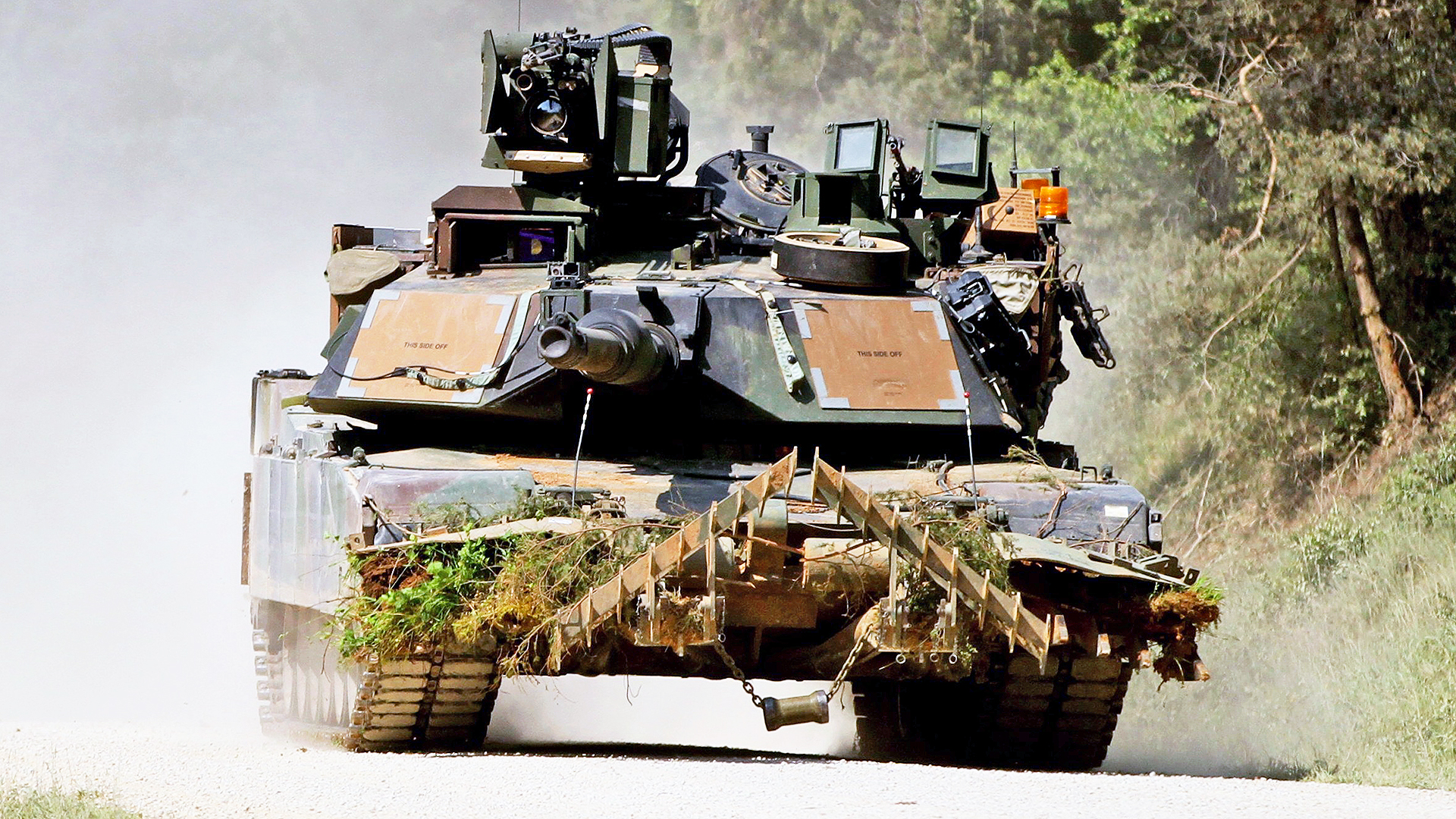After weeks of mounting pressure, the governments of Germany and the United States today both announced they will deliver Leopard 2 and M1 Abrams main battle tanks to Ukraine. Possibly even more significant was Berlin’s announcement that it will also issue licenses allowing the transfer of other Leopard 2s from partner countries that also want to deliver them to Ukraine.
The German Chancellor Olaf Scholz said the decision to provide Leopard 2s was part of a broader effort to strengthen German military support for Kyiv. A statement from the German government said that the move came as “the result of intensive consultations with Germany’s closest European and international partners.”

“This decision follows our well-known line of supporting Ukraine to the best of our ability,” Scholz said. “We are acting internationally in a closely coordinated manner.”
Ukrainian President Volodymyr Zelensky welcomed the news, saying that he was “sincerely grateful” to the German Chancellor. But Zelensky did also issue a warning about the quantity and delivery time of the vehicles, which he noted is “critical.”
Germany plans to “quickly assemble two tank battalions” equipped with Leopard 2s for Ukraine. Typically, a German tank battalion consists of 44 Leopard 2s, including three tank companies each of 14 Leopards. Other tanks, and combat support vehicles, are assigned to a staff company.
As a first step toward realizing this goal, Germany will provide a company of 14 Leopard 2A6 tanks from German Armed Forces stocks.
The Leopard 2A6 is one of three main versions of the tank that are currently used by the German Armed Forces, or Bundeswehr, according to its own website.
The oldest of these is the Leopard 2A5, introduced in 1995, which is armed with a 120mm/L44 smoothbore main gun. The improved Leopard 2A6M arrived in service in 2001 and features a longer-barrel 120mm/L55 gun, as well as improved mine-protection measures and other enhancements. The latest model is the Leopard 2A7V, in use since 2014, with a range of other improvements, including an air conditioning system, advanced optronics, and programmable ammunition. You can read more about the differences between Leopard 2 variants here.

“Other European partners will in turn hand over Leopard 2 tanks,” the government said in a statement. This indicates that an international coalition will be required to equip the two battalions, an initiative that was previously discussed by Poland within the framework of Leopard 2 transfers. Yesterday, Poland reportedly made an official request for Germany to approve a third-party transfer of Polish-operated Leopard 2s.
As well as Germany and Poland, Leopard 2s in different variants are currently also fielded by Denmark, Finland, Greece, Hungary, Norway, Portugal, Spain, Sweden, and Turkey, all of which have previously supplied different kinds of heavy weaponry to Ukraine since the full-scale Russian invasion began last February.

Meanwhile, the Czech Republic and Slovakia are in the process of receiving Leopard 2s from Germany, allowing them, in turn, to pass Soviet-era tanks and armored fighting vehicles to Ukraine.
So far, both Poland and Finland have said they will supply Leopard 2s to Ukraine, once Germany provides the authorization to do it.
The next country to join them could well be Spain. Based on local reports, the Spanish Armed Forces is finalizing the details for a transfer of Leopard 2s as part of a wider collaborative effort. According to the newspaper El Mundo, 53 of the 108 Leopard 2s acquired by Spain are potentially available for transfer, of which at least 20 of them are in “good condition.”
Today, the Swedish Minister of Defense, Pål Jonson, did not rule out the future transfer of Leopard 2s (known locally as Stridsvagn 122) from Swedish stocks. “Currently, preparations are not being made for a donation of tanks from Sweden, but it is not excluded that this could happen at a later stage,” Jonson told the newspaper Svenska Dagbladet.
The Ukrainian Foreign Minister, Dmytro Kuleba, today called upon allies to join the “tank coalition” and send “as many of them as possible.”
The process of training the initial Ukrainian crews on the Leopard 2 will “begin quickly in Germany,” the government has announced.
As well as training, the German package will also include logistics, ammunition, and maintenance.
In another announcement today, the U.K. defense contractor Pearson Engineering said it would be providing Ukraine this year with a “large quantity” of Full Width Mine Ploughs for integration with Wisent 1 armored engineer vehicles, or AEVs. The Wisent 1 is based on the chassis of the earlier Leopard 1 tank and was developed to “flexibly, cost-effectively, efficiently and economically support the Leopard 2 main battle tank and other vehicles,” according to FFG Flensburg, the German firm that developed it. So far, the German government has not formally announced a transfer of Wisent 1s or Leopard 1s to Ukraine.

Kyiv has long sought advanced, Western-made heavy armor to help break through Russian defensive lines and ultimately return Russian-held territory to Ukrainian hands. Until now, however, Germany had been reluctant to agree to deliveries of Leopard 2s, either taken from its own stocks or from those of third parties, which also requires German approval. It’s not only Berlin, however, which has so far held back from promising Western tanks, delivery of which is seen by some as highly provocative, with the risk of further increasing tensions with Moscow.
Just last week, for example, the German Minister of Defense Boris Pistorius reportedly said that he had ordered an official inventory taken of Leopard 2s in his country. This looked very much like another stalling move since German defense firm Rheinmetall has repeatedly talked about the availability of tanks it has in its warehouses that could be delivered to Ukrainian forces.
Hours after the announcement from Berlin, the move from the German government was followed by a similar commitment from the United States, which said it will deliver 31 M1 Abrams main battle tanks to Kyiv — a number chosen since it equates to one Ukrainian Armed Forces tank battalion. Also included in the package will be eight M88 armored recovery vehicles (ARVs).
While the specific version of the M1 tank to be provided to Ukraine has not so far been disclosed, President Joe Biden today described the Abrams being delivered, in general, as “the most capable tanks in the world.”
A senior administration official described the move as “very much a continuation of our efforts to provide Ukraine with the capabilities that they need to continue to better defend themselves and, in keeping with that, [is] representative of a long-term commitment that we have to Ukraine’s defense needs.”

The officials also pointed to a Ukrainian request for new armored vehicle capabilities “to defend their territory, prepare for new counteroffensives and increase their long-term security.”
As with the Leopard 2, there is clearly an aspiration from Washington that the initial delivery of U.S.-supplied M1 Abrams tanks will spur other allies to transfer tanks from their stocks, too, although these might not necessarily be of the same type. “We do expect other nations to announce contributions of additional armored capability, including some that will be readily available for use on the battlefield in the coming weeks and months,” a U.S. official said, before pointing to the German Leopard 2 announcement.
Russia has slammed the move from Ukraine’s allies, with Kremlin spokesman Dmitry Peskov declaring that any tanks sent to Ukraine by the United States would “burn like all the rest.” Meanwhile, Anatoly Antonov, the Russian ambassador in Washington, said deliveries of U.S. tanks would be “another blatant provocation.”
Other modern Western tanks are also likely headed to Ukraine, with France and the United Kingdom having previously offered to deliver a company each of the Leclerc and Challenger 2, respectively.
Intriguingly, there are reports from the U.K. Ministry of Defense that Russia is also making efforts to bring advanced main battle tanks into its Ukrainian war, in the shape of the T-14 Armata, a fighting vehicle that has had a particularly troubled development period and which is still not yet in full-scale service. According to the U.K. MoD’s latest Defense Intelligence update, “Russia has worked to prepare a small number of T-14 Armata main battle tanks for the type’s first operational deployment in Ukraine.”
However, “deployed Russian forces were reluctant to accept the first tranche of T-14s allocated to them because the vehicles were in such poor condition,” the same source added. It’s not clear what, exactly caused this apparent rejection, but the U.K. MoD points to previous problems with the engine and thermal imaging system as two potential reasons. Either way, it looks like it may be some time before the T-14 gets a chance to be combat-tested against a modern Western main battle tank.
It’s not clear when the first Leopard 2s will arrive in Ukraine, although Mark Hertling, the former commander of U.S. ground forces in Europe, has said that the Leopard 2s, at least, could be in action as early as March. If that’s the case, the German-made tanks could be on hand to take part in a widely expected spring offensive that may well be critical to the outcome of the war. Rheinmetall has previously said that it would take at least six weeks to get Leopard 2s from its stocks to Ukraine.
For the M1 Abrams, a senior U.S. administration official said today that “the delivery will take some time,” meaning months rather than weeks, but that the United States will begin now to establish a comprehensive training program for the Ukrainian crews who will operate them. The official added that these tanks are “complex systems that require a significant amount of training and maintenance, so the DoD is currently working through the mechanisms to deliver the fuel and equipment Ukraine will need to operate and maintain the Abrams.”

Whenever Leopard 2s and M1 Abrams arrive, however, today’s announcements in Berlin and Washington will likely have far wider ramifications. With a considerable stock of Leopard 2s and M1 Abrams available from different allies, this could well start a steady flow of these tanks into Ukraine and they may yet emerge as a major factor in Ukraine’s ability to increasingly take control of the battlefield as the war grinds into its second year.
Contact the author: thomas@thedrive.com
